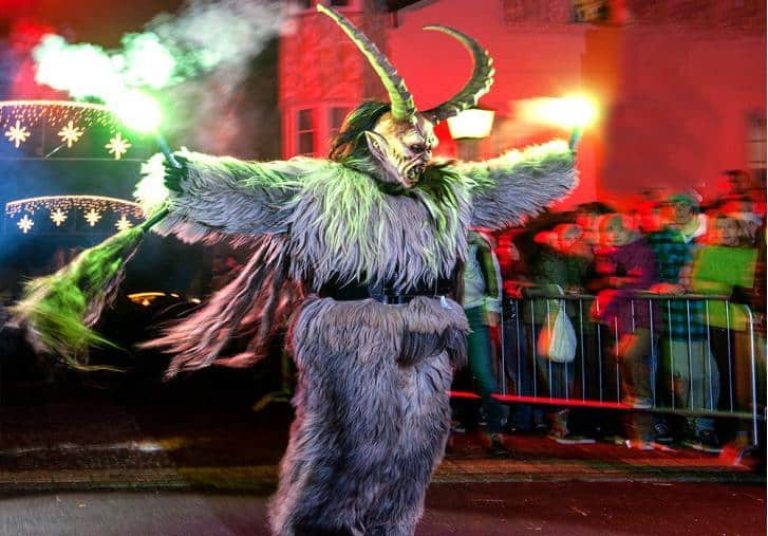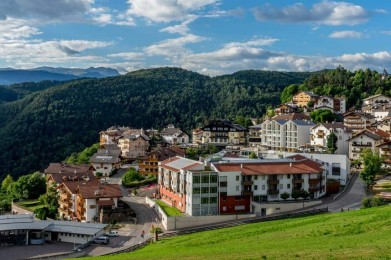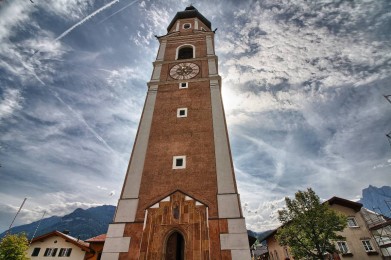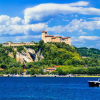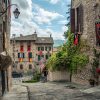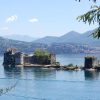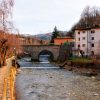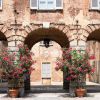The Krampus are goat men with long pointed horns. Their skin is covered with a thick sheep fur, the face is hidden behind a terrifying wooden mask and dressed in dirty and untidy rags. Their arrival is announced by violent cowbells, sinister grins and chilling screams. Krampus roam the streets with whips and chains. Their mission is to unleash their anger against whoever they encounter on their way but above all they are looking for children who have been bad during the year, to punish them.

Un immagine d’epoca con Krampus e Nicolò intenti a far visita a delle dolci famiglie tradizionali
In fact, unlike St. Nicholas (the origin of modern Santa Claus) that on the night of December 5 distributes sweets and candies to good children in the streets of the countries mainly in the Alps, the Krampus frighten and instill fear to small rascals. Their name could derive from the Bavarian “Krampn” (dead, putrefied) or from the German Kramp (claw).
A legend tells that very long ago, in a time of famine, the young people of some villages disguised themselves with skins of animals, horns and masks to scare the inhabitants in order to raid and steal supplies. Over time these young people realized that among them, since they never took off their masks, the devil himself was hiding, recognizing him for the goat’s hooves. Concerned and frightened by this presence, the young people asked for help from San Nicolò who, through an exorcism, freed the area from the evil. The young people converted and instead of continuing to scare decided to accompany the saint along his distribution of gifts and food to the population.
In most of the towns of South Tyrol, from December 5, you can attend several parades during which St. Nicholas distributes gifts, smiles and good words while keeping the terrible Krampus at bay until sunset. As night falls, when the saint withdraws, the goat men give free rein to their repressed anger, shouting, shaking, frightening and whipping those they meet along their way.
I Krampus a Castelrotto
In the tradition, the art of carving these masks is ancient and includes two types: the “Larvae”, or open-mouthed masks with large sharp teeth dripping with blood, and the “Masks of expression”, masks with the mouth closed, not colored, without blood and finely chiselled. The carver artists spend a lot of time, and a lot of effort, in creating the frightening masks of the Krampus and, in some cases, these terrible faces can weigh even 10 kilos.
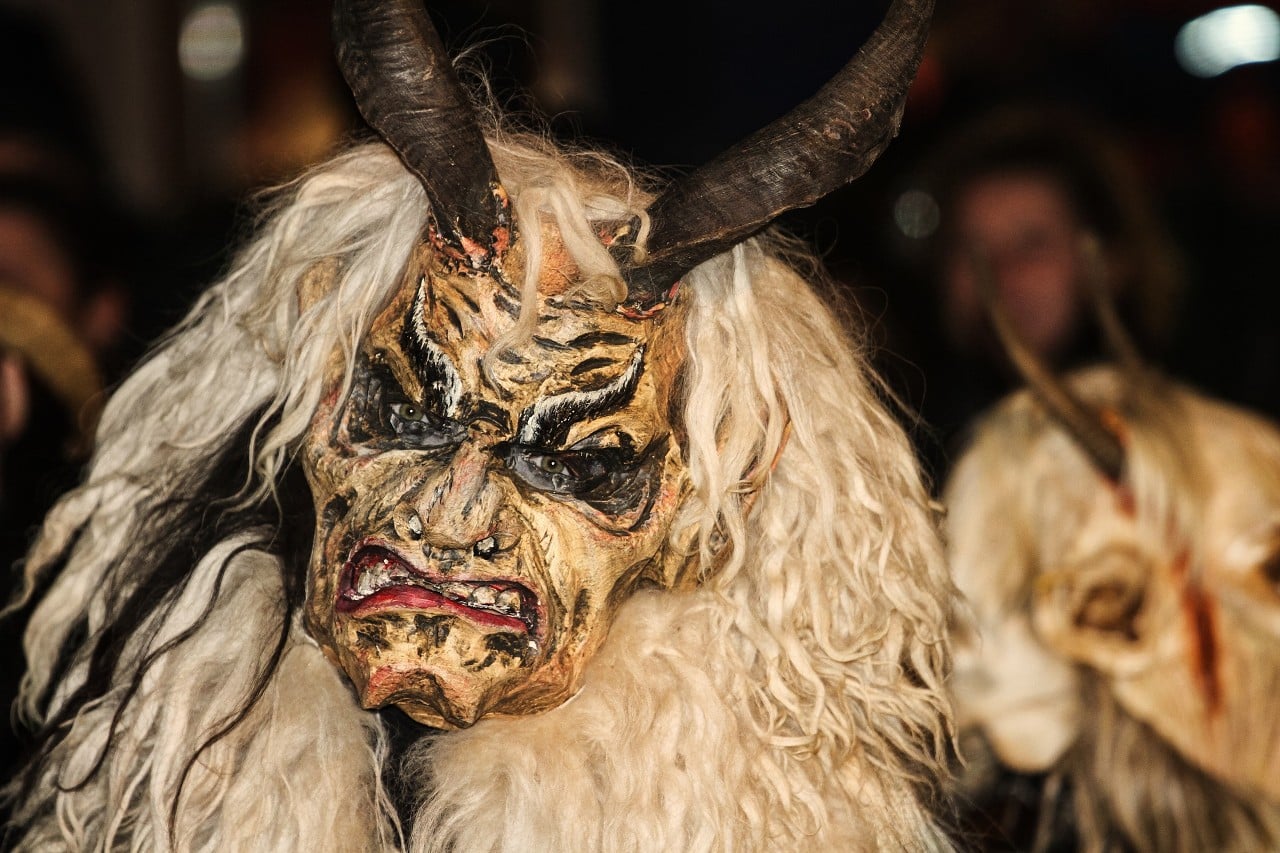
Among the curiosities we notice that there can also be “Krampe” (she-Krampus) but under the mask there are always and only men. In fact, only men can dress up as Krampus, male or female, but only if they are unmarried. Another peculiarity is that a Krampus never takes off the mask. Being seen “unmasked” seems to represent a great disgrace.

